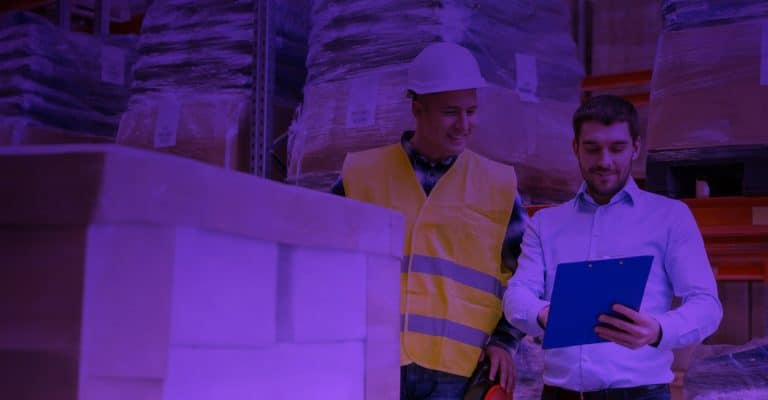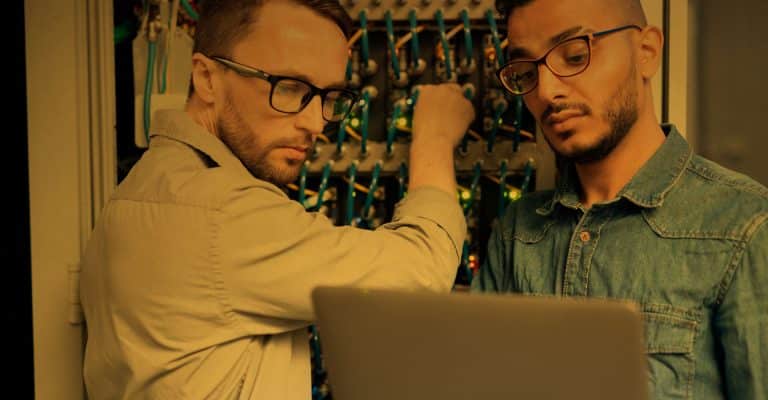

September 2022 Edition!
AIU News + Essays + Education + Culture + Science + Technology + Art + Design + Body + Mind + Environment + Human Rights + Animal Rights + Project Management + About AIU
Luctuous note

JULY 26, 2022. The Academic Council of AIU expresses its great sadness at the sensitive passing of Luciano Bonaveri Diettes, son of the outstanding AIU graduate student, Pablo Bonaveri. We also express our solidarity with Pablo and wish that from now on, he and his family will only know of joys, successes and celebrations.
Awarded by 2 Universities

JULY I, 2022. One of our gaduates, Dr. Carlos Alberto Rossi, has been awarded by 2 diferent Universities. First, by Instituto de la Experiencia Exponencial for his outstanding performance as a scientist, researcher, business consultant and professor, in order to serve the student society of the new generations, with invaluable knowledge, media tools and his own experience, in their business and social projects that will be foundation of a new society. Second, by Universidad de Nueva España, with the Bronze Cross of the Noble Company of Bernardo de Gálvez, for his performance supporting the development of advanced education, plus gathering the required merits and services. Dr. Carlos Rossi has completed a Doctorate program in Education at Atlantic International University.
ColdHubs: your new business

Would you like a great business idea? How about solar-powered cold storage of food? In this new course from AIU, you will learn about ColdHubs which provide solarpowered cold storage for food. The result is that less food is wasted. Cold- Hubs are being used in Nigeria, but could be used in any country. New Course: ColdHubs: Solar- Powered Cold Storage to Reduce Food Waste. The assignment is to write an essay. When you are done with the assignment, submit it for course credits. Watch this video to know more: https://www.youtube.com/ watch?v=VnIV65l0K0c
Graduated with Distinction
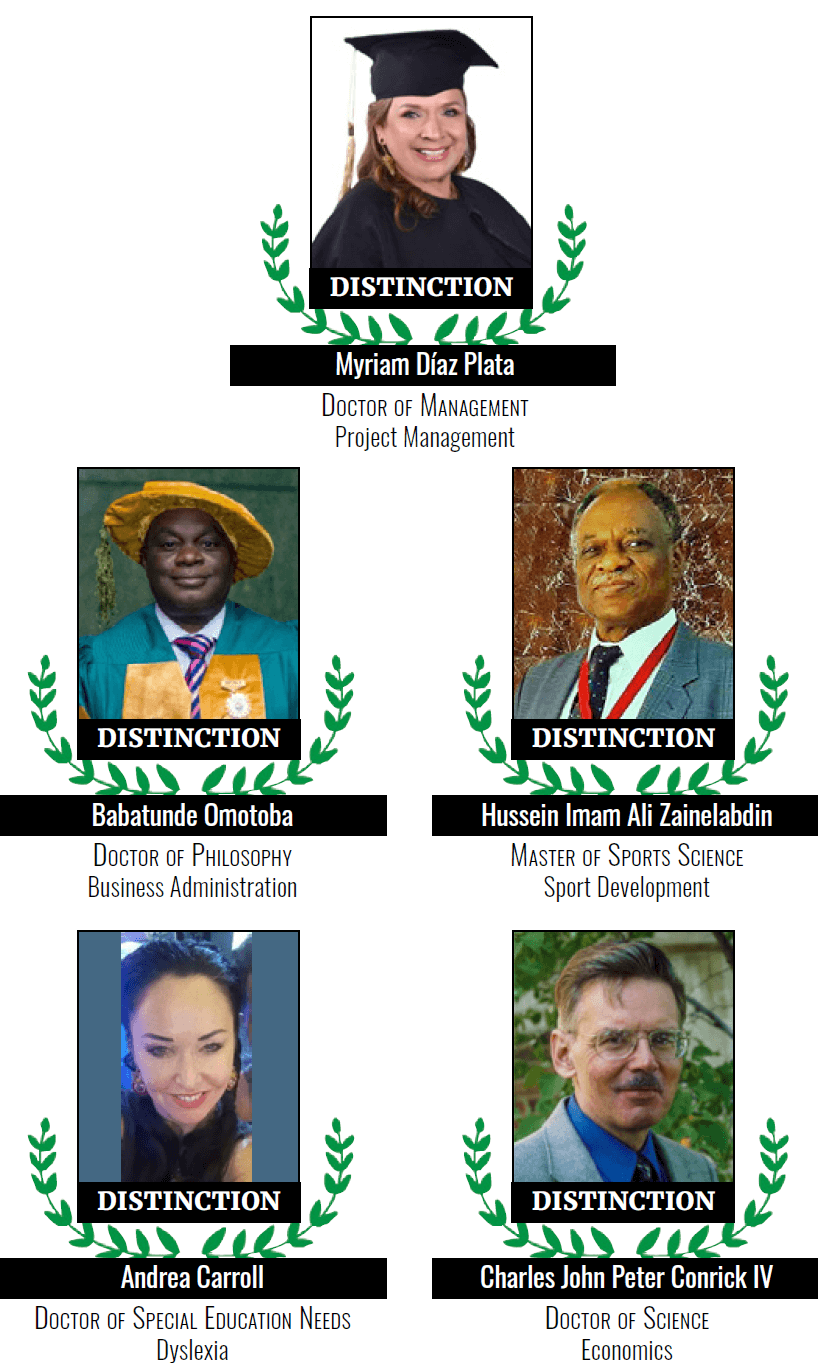
Babatunde Omotoba
Doctor of Philosop hy
Business Administration
Hussein Imam Ali Zainelabdin
Master of Spo rts Science
Sport Development
Andrea Carroll
Doctor of Special Education Needs
Dyslexia
Charles John Peter Conrick IV
Doctor of Science
Economics
Myriam Díaz Plata
Doctor of Management
Project Management

Bachelor of Science
Mechanical Engineering
Argentina
Hector Ivan Rodriguez
Doctor of Science
Statistics
Argentina
Sandra Carina Bracelente
Master of Health Science
Nutrition and Wellness
Argentina
Elena Beatriz Gonzalez
Master of Health Science
Nutrition and Wellness
Argentina
Yahaira Eloisa Flores Buchizo
Bachelor of Accounting
Accounting
Bolivia
José Miguel Jaldin Suárez
Master of Health Science
Nutrition and Wellness
Bolivia
Tshephang Mokwenaotsile
Bachelor of Accounting
Accounting
Botswana
Gyanesh Kumar
Doctor of Business Administration
Business Administration
Brazil
Guiésrima Philippe Bonkoungou
Master of Science
Security Intelligence
Burkina Faso
Bate Paschal Tabot
Bachelor of Business Administration
Business Administration
Cameroon
Vukugah Achombwom Thomas
Doctor of Philosop hy
Epidemiology
Cameroon
Tchim Tabaro
Doctor of Philosop hy
Community Health Development
Canada
Ajayi Adekunle Oluwole
Doctor of Philosop hy
Accounting
Canada
Myriam Díaz Plata
Doctor of Management
Project Management
Colombia
Temfack Aurore
Bachelor of Educational Administration
Educational Administration
Democratic Republic of Congo
Ursula María Rosa Acosta Barrera
Doctor of Literature
Hispanic American Literature
Dominican Republic
Santa Benita Díaz Victoriano
Doctor of Human Resources
Human Resources
Dominican Republic
Rafael Bolívar Sención Ávila
Bachelor of International Business
International Business
Dominican Republic
Aleanny Jeanell Paulino
Bachelor of Nutrition
Functional Foods
Dominican Republic
Juan Alberto Sanchez Ferreras
Master of Criminal Intelligence Analysis
Intelligence, Counterint. and Analysis
Dominican Republic
Henry Maurice Basabe
Bachelor of Psychology
Development Health
Ecuador
Víctor Eduardo Soto García
Master of Health Science
Nutrition and Wellness
Ecuador
Freddy Whimper Torres Flores
Doctor of Philosop hy
Profile Design and Curriculum Reform
Ecuador
Jose R. C. G. Rampone Castaneda
Bachelor of Information Technology
Information Security
El Salvador
Sulayman Darboe
Bachelor of Science
Psychology
Gambia
Ricardo Filipe dos Santos Miguel
Bachelor of Science
Health Science
Germany
Rita Chajil Yoxón
Bachelor of Social Work
Social Work
Guatemala
Jean Traore
Master of Arts
Communication and Public Relations
Guinea
Cynthia Sandhya Sukhai
Doctor of Science
Forensic Psychology
Guyana
Akash Persaud
Master of Science
Educational Psychology
Guyana
Edis Zulema López Padilla
Master of Science
Environmental Science
Honduras
Dra. Anna Maria Corbianco
Master of Health Science
Nutrition and Wellness
Italy
Amadou Koita
Doctor of Public Health
Health Financing and Policy
Mali
Saira Elena Murillo Murillo
Bachelor of Science
Marine Biology
Mexico
Patricia Magaña Viramontes
Bachelor of Business Administration
Organizational Development
Mexico
Eli Ulloa Guadal
Master of Health Science
Nutrition and Wellness
Mexico
Dra. Consuelo Avilés Morán
Master of Health Science
Nutrition and Wellness
Mexico
Alma Karina García Padilla
Master of Health Science
Nutrition and Wellness
Mexico
Maria Elizabeth Amaya Sandoval
Master of Health Science
Nutrition and Wellness
Mexico
Dra. Gabriela Martínez Franco
Master of Health Science
Nutrition and Wellness
Mexico
Dra. Myrna Limón Morales
Master of Health Science
Nutrition and Wellness
Mexico
Dr. Raziel Ramos Garcia
Master of Health Science
Nutrition and Wellness
Mexico
Celso Cossa
Master of Business Administration
Business Management
Mozambique
Ifeanyi Eddy Okoh
Master of Science
Engineering Management
Nigeria
Ekundayo Olorundare
Doctor of Philosop hy
Peace, Leadership and Conflict Resolution
Nigeria
Babatunde Omotoba
Doctor of Philosop hy
Business Administration
Nigeria Owolabi Olufemi
Bachelor of Science
Business Administration
Nigeria
Heman Usman Bassi
Doctor of Philosop hy
Marketing
Nigeria
Master of Science
Project Management
Nigeria
Muhammad Kabir Mustapha
Doctor of Science
Software Engineering
Nigeria
Nnenyelike Lawrence Uzochukwu
Doctor of Business Administration
Business Administration
Nigeria
Egberock Sunday Egbe
Doctor of Economics
Petroleum Economics
Norway
Wahid Jubran Hamad
Doctor of Philosop hy
Educational Leadership
Palestine
Hussein Imam Ali Zainelabdin
Master of Spo rts Science
Sport Development
Qatar
Kubwimana Marie Charlotte
Master of Science
Public Health
Rwanda
France Gonsalve Bonté
Post-Doctorate of Science
Legal Studies
Seychelles
Joycy E. S. George
Associate of Education
Education
Sierra Leone
Osman Mohamed Jama
Bachelor of Science
Public Health
Somalia
Said Abdillaahi Ahmed Weid
Bachelor of Business Administration
Public Administration
Somalia
Nosizwe N.P. Pakade
Doctor of Arts
Gender and Development Studies
South Africa
Ester Vera Kruger
Bachelor of Social and Human Studies
Public Health
South Africa
Frans Martinus Labuschagne
Bachelor of Science
Civil Engineering
South Africa
Dra. Neuda Marques de Oliveira
Master of Health Science
Nutrition and Wellness
Spain
Ma Dolores Pérez-Jaraiz
Master of Health Science
Nutrition and Wellness
Spain
Rafael Navas Espejo
Master of Health Science
Nutrition and Wellness
Spain
Grace Emica Nagato Namiki
Master of Health Science
Nutrition and Wellness
Spain
Dra. Manuela Gómez Pérez
Master of Health Science
Nutrition and Wellness
Switzerland
James Charles Okello
Doctor of Philosop hy
Project Management
Uganda
Agaba Collins
Doctor of Philosop hy
Public Health
Uganda
Dipolelo Petronella Phokela
Master of Health Science
Maternal and Child Health
United Arab Emirates
Mark Jarad Dearden
Doctor of Philosop hy
Educational Psychology
United Arab Emirates
Andrea Carroll
Doctor of Special Education Needs
Dyslexia
United Kingdom
Federico Delucchi Vona
Bachelor of Economics
Economics
Uruguay
Dra. Alma Martínez
Master of Health Science
Nutrition and Wellness
Uruguay
Dra. Gabriela Ruth Laks
Master of Health Science
Nutrition and Wellness
Uruguay
V Balamuralidhar Sarabu
Post-Doctorate of Science
Computer Science
USA
Guillermo Ezequiel Batista Civil
Bachelor of Science
Psychology
USA
Henry Adigwe Nwanze
Bachelor of Science
Electrical Engineering
USA
Mark B Carpenter
Bachelor of Arts
General Studies
USA
Yingzhe Li
Doctor of Philosop hy
Biology
USA
Charles John Peter Conrick IV
Doctor of Science
Economics
USA
Fabián Raymundo Estrada Osorio
Bachelor of Systems Engineering
Computer Science
USA
Osward Sinyangu
Master of Science
Mechanical Engineering
Zambia
Nathan Kashimu Changwe
Bachelor of Business Administration
Accounting and Supply Chain Management
Zambia
Find More Graduates

Testimonials
FIND MORE TESTIMONIALS FROM A I U STUDENTS HERE: https://wp24.aiu.edu/Testimonials.aspx
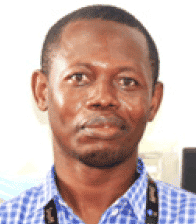
Herbert Thole
Bachelor of Public Health
June 3, 2022

Mikiesha Murphy
Bachelor of Accounting and Finance
May 25, 2022

Augustine Kaponge Chisalu
Master of Mechanical and Industrial Engineering
June 3, 2022

Stephen Okello
Bachelor of Environmental Engineering and Management
June 7, 2022
To educate ourselves for life

By Dr. Rosa Hilda Lora M. Advisor at AIU | rosa@aiu.edu
The concept of education always presupposes school education; education in a classroom or by following the online process. Education has different forms: education can be formal education and informal education. What is always there is to do something new based on concepts that we already have and new concepts that will give us a new element to our work, whether in science or in life. Formal education is that organized with a purpose and a process: we speak of programs, levels, Philosophy, Policies, areas of knowledge and certification. In this education there is a concept of human being, society and science. Sometimes they can be manifest and other times through the documents that the organization presents us, we can identify the mentioned aspects.
In informal education, education is what we learn from others or by ourselves. This education allows us to insert ourselves into a society regardless of formal education. Informal education is part of the group to which we belong to it identifies us as such even though we also have less knowledge of international society. We ask ourselves: why, with so many ways of learning, are we living in a time in history in which so much science and so much technology seems to be that we are not in the world in which we should live? What are we missing? What did we do wrong? What are we still doing wrong?
Doing a quick overview, what we notice at a general level, at a global level, is that this social group, which forms a nation, opposes what this other group, which forms another nation, says; that these human beings oppose what the others human beings say; even within the same country. It seems that we live confused between what is freedom and the union to achieve the ends and well-being for all. What is noticeable at first glance, more and more, is that there is an interest in having the best without caring about the other. There is no question if it is the best for me within my faculties. There is only: having and having at the cost of whatever and whoever.
What education have we forgotten that today is costing us lives and the planet? We are witnessing forest fires in Europe and the United States-USA. Lack of foods for certain human groups. We are living the consequences of undeclared wars. We are witnesses or victims of the great droughts. We see how politics is to find the way to govern for the enrichment of the group in power by bringing social forms of administration that are already proven not to work. The only thing that is constant is the economic interest at any rate: this culture claims to be the owner of knowledge, the other says: we are the owners of the money. No matter what kind of life; the planet in which only life is possible for us is claiming it from all sides. What have we not learned?
We have not learned values: we have not learned moral values; it’s not about religion. We have not learned to value the other. We have not learned to value life; the life of the planet and the life of every human being. We are on planet Earth but each one wants to be only owner. We need to learn the value of living with the other. We need to learn how to maintain the life of our planet. We need to learn moral values instead of reciting them to pass a course. We have to see the life of the planet. We have to see life in the other. We have to learn to live with the other. The education we have to offer, formal or informal, to all those who depend on us, is about what it is to be a human being. What we must re-educate ourselves in is what it is to be a human being.
The history of humanity is as follows: divide the execution of tasks between men and women. In the formation of human groups, women dedicated themselves to agriculture due to the sedentary lifestyle that it represents; the men on the hunt for the move behind the prey and the force that in some cases had to be done. Over the centuries the tasks have become more specific for each sex. With the development of science and technology we have not introduced the changes that human beings and society demand.
Today education and reeducation is necessary as to what it is to be a human being. A human being is someone who must carry out the necessary tasks and what we do is: since they were small, boys do this and girls do this other. Beings of the female sex are taught these tasks and they have been constituted in the tasks that are considered of lower rank. Male humans do tasks that indicate superiority. A man doesn’t cook because that’s a woman’s job. A man doesn’t sew a button because that’s a woman’s job. From a young age: the girl dresses in pink and the boy in blue. Today pink shirts are made but there are men who don’t wear them at all. When a boy is born in a family: How wonderful! When a girl is born: everyone is silent. In the workplace, today, women demand the same payment for the same work as a man. How long did it take women to be able to vote? How long did it take women to be able to study careers in which there are more men because it was considered that strength or more logical development was necessary? We have to educate and re-educate ourselves that we are human beings who can perform a high percentage of common tasks. We have to educate and reeducate ourselves, nowadays: the man is not the provider and the women the second in obtaining the goods for the family.
We have to educate ourselves and re-educate ourselves that life is more than possessing goods at any cost. We have to educate and reeducate ourselves that happiness is developing our personal skills instead of sinking someone in order to be important. We have to educate and reeducate ourselves that life has to be possible for everyone. We have to educate and reeducate ourselves to generate life on the planet, which is our only possible home so far. We have to educate and reeducate ourselves to be useful in all aspects because there shouldn’t be tasks for men and tasks for women. We have to educate and reeducate ourselves in that we are beings that should grow up with the same opportunities and the same rights. We have to educate and re-educate ourselves that happiness lie in the well-being of each one and in developing the skills that make us unique beings. At this time, Western society is involved in a war that will not stop for a long time and we are seeing diminishing resources, increasing inequalities and proven policies that do not generate good.
The East does not want to interfere in the problem of the West: they seek love of nature and acceptance of others. If we follow both in the West and in the East in what: We are the richest. We are the most cultural. Happiness is only achieved by having a lot of money. It doesn’t matter to sink the other as long as you have goods. Women are worth less than men. The planet will continue producing what we want. If we continue like this: we will continue in the crisis we are living nowadays.
BIBLIOGRAPHY. Savater, Fernando (2020). Reflexiones en mitad de la Crisis- Ethic. Retrieved from: https://ethic.es/2020/04/crisis-coronavirus-fernando-savater/
13 Investment mistakes and clues for avoidance
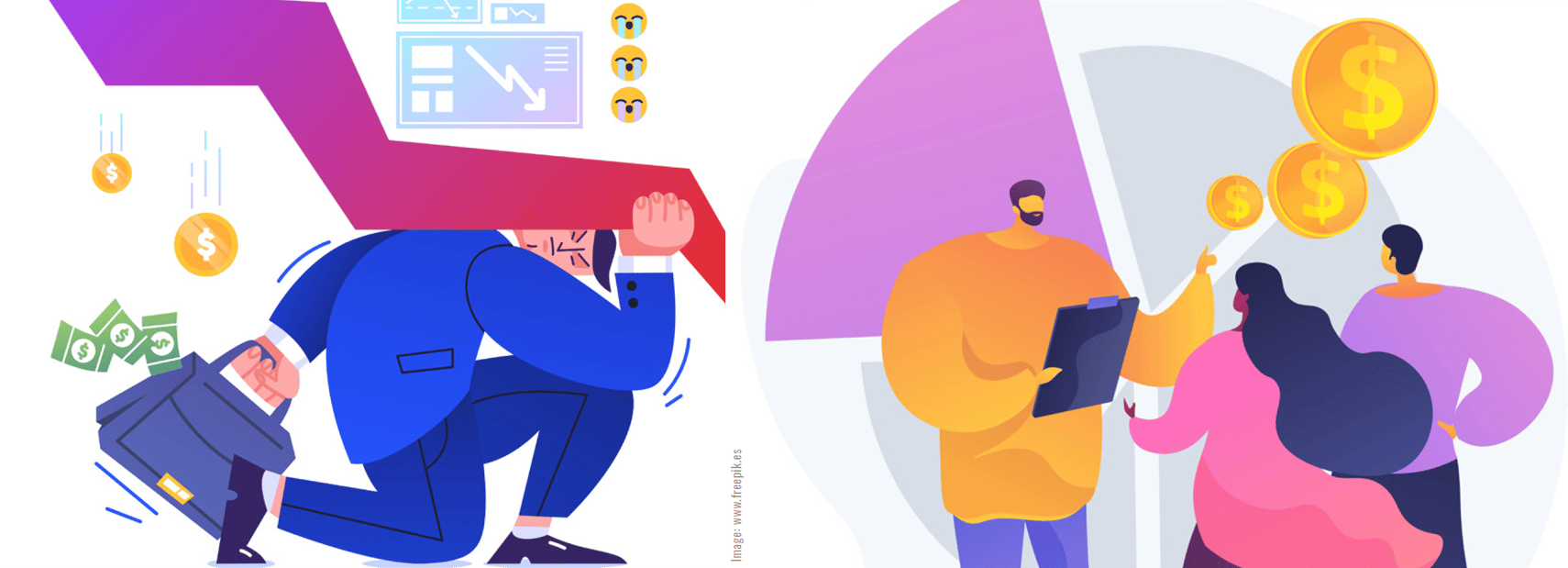
Ndawo Victorine | Doctorate in Quantitative Finance | Part 2/2
Mistake 3: Not determining the investor’s risk preference. Risk and uncertainties are avoidable aspects of all investments and they play a vital role in economic life and decisions. As a result it is important to understand the individual’s attitude towards risk. Otherwise, it could lead to investment mistakes and failure. Risk preference is one of the key ingredients that determines the financial decision of the investor or entrepreneur. They play a crucial role in: • Shaping the needs and demand for the type of debt requested. • The frequency at which the stocks/assets are traded. They also influence the acquisition of financial information.
When the risk preference of investors are well understood, it will determine and serve as a guidance that will order the choice and model of the portfolio generated. It may also form some sort of foundational guide lines to asset prices (Firth, 2015). It could contribute highly to the assessment and mitigation of financial mistake like not participating in insurance schemes and financial market. Once more, it helps to provide a conscious assistance to financial advisors and intermediaries to adhere with the protection of regulatory measures that often require adequate measurement and evaluation of risk preference before engaging to allocate any form of financial advice, (Guiso, 2013). Risk preference are the core to theories that govern the choice of the portfolio. Let’s observe the model below for risk preference:
Ω_i = (Er_i^e)/(λ_i γ_i^2) Source of equation: Household Finance; An Emerging Field, (Guiso, 2013). Where Ω_i Is the risky asset of the investor I Er_i^e is the excess return of the investor I γ_i is the parameter that captures the risk aversion; thus it gives the coefficient of the risk aversion of the individual investor λ_i is the return’s volatility of the risky security/asset. Determinants of risk preference. In this write-up, we will consider only risk aversion as the major determinant of risk preference. The following factors serve for the determinants of the risk preference of an investor: • Wealth, investments and some factors on the environment. • The trend of risk aversion: this consist of looking on low risk aversion changes as time goes on. • The study of the sensitivity of taking financial risk with respect to investment on trading. • Consideration of some factors like regret.
Mistake 4: Over expectation or expectation based on another investor’s / advisor’s point of view In order to invest for long term, the investor has to create a portfolio of well diversified assets. The portfolio should incorporate an appropriate level of risk with all the returns inclusive. According to (Stammers, 2016), one can design the right portfolio but the returns on this portfolio cannot be controlled or predicted. If one succeeds to predict this returns or expectations, it means the market can be predicted. This is not possible. So, in order to even have an idea of what a return or expectation can be, a good idea of the goal, asset allocation must be properly understood and incorporated, (Mallouk, 2014).
Mistake 5: Buying at higher prices and selling at lower prices One of the basic principles of investing is to buy at lower prices and sell at higher prices. Many investors do not usually apply rational decisions at this point. Investors usually fall in the temptation of trying to maximizing short term returns so they sell lower than was bought.
Mistake 6: Failing to carry out adequate diversification There are so many market scenarios. So, the best way is to constitute a portfolio that is capable of appropriating the returns and the level of the risk involving all the market scenario is to diversity. Adequate diversification captures all market scenarios, (Park, 2017). Returns can be maximized by creating a large investment exposure in one asset. Even in investment one sector cannot work. This is because if the market scenario more against this asset or sector, disaster will result. According to (Partridge, 2010), even though adequate diversification is encouraged, too much of it can affect the overall performance, (Stammers, 2016). So, diversification should be balanced. In this case advice can be sought from professionals.
Mistake 7: Spending much money on fees and commissions One of the common mistakes investors commit is pay more (spending highly) on issues like advisors fees or commission. For small businesses excess expenditure on one item leads to a significantly adverse effect on the net worth; especially over a long term. Therefore, the pointer here is to be aware of all the investments decisions and their cost from the on-set of the business creation. Fund allocation for such arm should be properly figured out, (Batnick, 2018). Watching out to see if such payment for professional advice is beneficial before even engaging in it.
Mistake 8: Good trading approach: too much trading and very often One key character of an investor is the ability to patiently work until the goal is achieved. Investing is not magical. This means that one don’t just invest and it turns out as the investor thought. The investor should develop a virtue called patience. This reason is because it entails time to achieve the ultimate reward of an investment. When investment tactics is continuously being modified, the return is at risk and may not come out as thought. Also, portfolio re-composition may also be risky. The already constructed portfolio and asset class should be carefully studied and more should be learned about it. Reconfiguration can only step in after careful studies and findings, (Mallouk, 2014).
Mistake 9: Using media information Media use their news channel to generate money for themselves by broadcasting tradable materials and information. The main reason is parsing out the information out of the noise. Skilled and successful investors gather all these valuable information especially from varied media sources. They use them for studies related to their business. That is the use information for research and analysis depending on the case at hand. On the contrary, some investors turn to use the media as the only source of information for investment decision. This is an investment mistake. The reason is because, when an information is made public, any person laying hold of it, factors it into market prices. The purpose of the media is mainly for adverts not market information. So, getting news from the media and using the information for market projections is an evidence of poor trading strategy. As a result, it is an investment mistake.
Mistake 10: Focusing on high yielding assets A common seduction encountered during investment is asset or security that is producing high yield. This is really tempting because the investor is like why wouldn’t I maximize the output money? One thing that one has to put in mind is that an asset or security, producing high returns also carries high risk! Again, the future performance cannot be predicted/guessed from the previous returns. So focusing on a yielding asset is an investment error. It is better to focus on the whole portfolio than to get distracted by the yielding asset, (Stammer, 2016).
Mistake 11: Not being able to state clearly the performance of an investment Some investors may have an idea on the performance of some items but in terms of the entire portfolio, it may be challenging. It is always necessary to relate the portfolio performance to the investment plan to find out if the investment is on track especially after economic situations like inflation, after cost and accounting cost are deducted. This is the best way to determine how best the investment is faring.
Mistake 12: Not being proactive It is often said that “one can’t tell the future”. Yes! But one can do things that will shape the future. It is clear that the investor cannot control the market or order what the market will produce, but he or she can undertake some actions such as saving, continuous investment of capital for some time and so on that can bring about great influence of the future returns and wealth generation. Being proactive and taking proactive steps in the surest means of influencing the accumulation of wealth as well as the investment returns. This gives an increasing probability of attaining the financial objectives. According to Warren and Soros another proactive measure is to predetermine the exit strategy of an asset before purchasing or making the investment. Otherwise the input time, money and energy may come to naught (Warren, 2003).
Mistake 13: Getting the wrong adviser Furthermore, one of the most common investment mistakes is working with the wrong adviser. The main reason of getting a business adviser is looking for someone who will play the role of a partner to facilitate the achievement of the investment goals. If not, the adviser is of no purpose. Thus, this professional should therefore be an ideal one who will be able to: • Share in the financial service provision of the business. • Get into the investment philosophy. • Participate in the general life of the investors so that adequate advice can be given when and where necessary for success promotion. Therefore, it is greatly encouraged to avoid getting the wrong adviser. A wrong business adviser can be avoided by taking time to make deep search and findings. So that you can get a good professional-business advisor, especially the one who is specialized in your domain of investment. This would produce a long lasting and beneficial results that would avoid wrong business decisions and promote the attainment of the business goals.
Conclusion Not only do investors suffer the consequences of the business mistakes they commit, their reactions is a pointer to other investors and people admiring investment opportunities (Guiso, 2013). Also, these mistakes could offer broader implications not only to the investors but also to the environment and other people related to him, the business, community and the world at large. One of the greatest evidence is from the business performance and their sustainability. For the investment mistakes briefly described above, their evidences are short listed along side. The best form of ridding yourself from business misconception, is to first of all find out these mistakes, be aware of them and then look for ways to avoid them. This is a clear cut way of preparing to succeed in any business venture. At this juncture, it is worth stating that when these mistakes are identified and avoided it leads to: • Reduction in the stress level of the investor. • The performance of the business is improved. • Profit will be made, thus contributing partly as a means to which the goal of the business could be arrived at. • Sustainability of the business will be assured. • The quality and Lifestyle of the investor and his immediate family members are positively affected. • The community also benefit. The end
REFERENCES • Al-Janabi, N. M. (2020). Money Supply Money Demand. Researchgate, 1-26. • Baker, H. K. (2019). Navigating the Investment Minefield: A Practical Guide to Avoiding Mistakes, Biases and Traps. Emerald Insight, 21-42. • Batnick, M. (2018). Big Mistakes: The Best Investors and their Worst Investments. New Jersey: Bloomberg Press. • Ben, C. (2015). A Wealth Of Commn Sense — Why simplicity trumps complexity in any investment plan. New Jersey: Bloomberg Press. • Bodie, ZVI et al. (2013). Essentials of Investments. New York: McGraw-Hill Companies Inc. • Chuck A. Arize et al. (2016, April 19). Market Timing Technique: It’s Uses by Practioners of Money Management. Article in Accounting and Finance Research., pp. 106-110. • Firth, C. P. (2015). Household Investment Mistakes: Evidence and Avoidance. EDHEC, 5-100. • Guiso, L. &. (2013). Household Finance: An Emerging Field. Einaudi Institute of Economics and Finance via Sailustiana 62- 00187, 1397-1532. • Lei, S. &. (2015). Factors Related to Making Investment mistakes in the Down Market. Journal of Personal Finance, 34-42. • Mallouk, P. (2014). The 5 Mistakes Every investor makes and how to Avoid them: Getting Investing Right. Hoboken, New Jersey: John Wiley & Sons Inc. • Park, T. (2017). Improving Portfolio Diversification with Uncorrelated Market Exposure. Nuveem, TIAA, 1-17. • Partridge, L. (2010, August). A Diversified Approach to Diversification. (D. P. Collins, Interviewer) • Piketty, T. (2014). Capital in the Twenty-First Century. London, England: The Belknap Press of Harvard University Press. • Stammers, R. (2016). Tips for Avoiding the Top 20 Common Investment Mistakes. CFA Institute, 1-2. • Tillinghast, J. (2017). Big Money Thinks Small: Biases, Blind Spot and Smarter Investing. New York: Colombia Business School Publishing. • Warren, B. e. (2003). The Winning Investment Habits. New York, N.Y 10010: St Martin’s Press, 175 Fifth Avenue.
Learning
The $300 textbook is dead

…says the CEO of textbook maker Pearson.
“There’s a famous phrase: The first step in solving a problem is recognizing you’ve got one,” says Pearson CEO John Fallon. And for education company Pearson, the problem is also one of its key products: the textbook. Since the 1970s, the business model for textbook makers has been to sell expensive books to students, updating them every few years to keep students paying top dollar. But online textbook rental services from companies like Chegg and Amazon have made it much easier to pay much less, and as a result Pearson’s revenues have fallen from $2 billion in 2013 to $1.3 billion today, Fallon said on the latest episode of Recode Decode With Kara Swisher. So instead of selling giant hardcover textbooks like Calculus: Early Transcendentals (list price for a new hardcover copy: $277.20), Pearson is going to start renting digital textbooks for $40 to $80, updating them over the air. Next month, it will launch the first of a new series of mobile apps called Aida —a portmanteau of AI and Ada Lovelace— that will let calculus students take a picture of their homework and, Fallon said, get step-by-step corrections. “There’s something like 100 different concepts that you have to master in introductory calculus,” he said. “If you’re designing your textbook, you teach those 100 concepts in a linear way, building on one another … Aida enables us to then also teach them in a nonlinear way, which means it’s personal and adapts it to you.” … Read full text:
Quiet quitting

Why working so hard only to get so little in return?
Quiet quitting is essentially about not letting your work overreach into your daily life and not doing more work than one is required. … This phenomenon can be seen as building off the Great Resignation, itself motivated partly by preexisting issues in the workforce as well as the COVID-19 pandemic. However, quiet quitting gained popularity through as one of the hottest TikTok trends. … The idea is that employees want to limit their workload and not let their job and managers control their lives outside work … it is about making a healthy work-life balance. The term is new, but the phenomenon isn’t, and wanting a healthy work-life balance and only doing the bare minimum is an old concept. … No career advancement, feeling undervalued and disrespected and low wages, were the main reasons most Americans quit working in 2021, according to a Pew Research Center report. … Quiet quitting is often cited as a reaction to the hustle culture so prevalent in capitalist countries like the US. This culture helped make one’s work encompass the entirety of one’s life, often called “living to work.” This contrasts “working to live,” which sees working as just a means to live one’s life. TikTok’s young userbase embraced the idea of not overworking and overextending yourself for your job, and noted how the stress has harmed their physical and mental health. … Read full text:
AIU makes a huge contribution to the world by giving new scient ifics the space for original investigations and research. Visit MyAIU Evolution
Fracking wells

Living near one ups risk of childhood leukemia.
Scientists at Yale University studied a sample of nearly 2,500 children in Pennsylvania, with 405 diagnosed with acute lymphoblastic leukemia (ALL), a type of cancer that affects white blood cells. The study was published last week in the journal Environmental Health Perspectives. ALL is the most common type of cancer in children. While the survival rate is relatively high, survivors are at a higher risk of other health problems, developmental and psychological issues, and learning difficulties. The latest study found that children who live within 2 kilometers (1.2 miles) of a fracking well had a 1.98 times higher chance of developing ALL compared to those who lived nowhere near a well. If they lived this close to a fracking site while they were still in the womb, the risk was 2.8 times higher. This is after the researchers accounted for other factors that might be related to being diagnosed with cancer, such as socioeconomic status and ethnic background. Fracking, also known as UOG, is the process of pumping bedrock with water, sand, and chemicals in an attempt to access stores of fossil fuels trapped deep beneath the Earth’s surface. There’s plenty of evidence to show that this process of fossil fuel extraction is terrible for the climate, the environment, and public health. In particular,a number of studies have linked it to pregnancy complications. …
Read full text:
Artificial embryos

A biotech company wants to create some to harvest organs.
A biotechnology company based in Israel wants to replicate a recent experiment that successfully created an artificial mouse embryo from stem cells —only this time with human cells. Scientists at Weizmann’s Molecular Genetics Department grew “synthetic mouse embryos” in a jar without the use of sperm, eggs, or a womb, according to a paper published in the journal Cell on August 1. It was the first time the process had been successfully completed, Insider’s Marianne Guenot reported. The replica embryos could not develop into fully-formed mice and were therefore not “real,” Jacob Hanna, who led the experiment, told The Guardian. However, scientists observed the synthetic embryos having a beating heart, blood circulation, the start of a brain, a neural tube, and an intestinal tract. Hanna told MIT Technology Review after the success of the mouse experiment he is working to replicate the results with human cells, including his own. “The embryo is the best organ-making machine and the best 3D bioprinter —we tried to emulate what it does,” he said. Other experts say it will take significantly more research before synthetic human embryos are within reach. Renewal Bio, the company founded by Hanna, wants to use this science for organ tissue transplants that could solve infertility, genetic diseases, and issues related to old age. … Read full text: Read full text
Get a better knowledge about our rights and the way we can use them on a daily basis to prevent any abuse or limitations of them. Visit MyAIU Human Rights.
Bird deaths
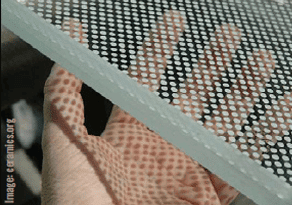
8 ways to prevent them
Collisions with windows cause billions of bird deaths each year; let’s make buildings more bird-friendly. 1. Fritted and patterned glass. Printed with a ceramic frit or dot pattern, this type of glass reduces glare. 2. Translucent and opaque glass. Either etched, stained or frosted, they reduce or eliminate collisions by avoiding the optical illusion of continued space. 4. Window films. Applicable to inside and outside surfaces. 5. Netting, screens and shutters. Solar shading or decorative facades that wrap entire structures. 6. UV-patterned glass. Avian species can see into the UV spectrum of light. 7. Uneven surfaces. Create contrast and uneven reflections. 8. Decals and stickers. Can range from stickers that resemble silhouettes of animals to simple strips of tape. Read full text:
Blak Douglas

Winner of the Archibald Prize 2022.
Sydney-based Dunghutti artist Blak Douglas painted 14 dark, flatbottomed clouds hovering around the fierce face of Karla Dickens for this year’s Archibald Prize-winning portrait. A signature element of his art, he normally draws his clouds “white and fluffy, just like our governments”. But for Moby Dickens, Dickens is portrayed knee-deep in floodwater in her hometown of Lismore flanked by foreboding rain clouds, one for each day the rain fell and drowned the Northern Rivers. In its 101 years, the Archibald Prize has regularly managed to capture the zeitgeist but with Moby Dickens Douglas has painted one of the most politically charged portraits in recent memory. “This painting stands to represent the irony that under the Coalition government the arts is continually kicked in the guts,” Douglas told this masthead. “Here we’ve got the winner of the greatest prize on the continent, which gets all the adulation and media attention, speaking about the importance of global warming and climate change —to a government that consistently kicked us in the guts by sapping arts funding to pump it back to opening new coalmines. This painting is extremely significant in that sense.” … Dickens described her portrait as a “killer painting” that paid homage to those that found themselves knee-deep in mud, physically, emotionally, mentally and financially after the natural disaster. … Read full text
E-Pilot

for active user wheelchairs
This add-on turns your wheelchair into a sporty vehicle in seconds. The powerful fork, the battery pack integrated in the frame and the powerful drive wheel combine sporty design and sophisticated ergonomics perfectly. Just dock it to the manual wheelchair, switch it on and turn the throttle. Here we go. Even distances of up to 50 km are no problem thanks to the large Li-Ion battery pack. When you reach your destination, undock the e-pilot and travel with your manual wheelchair as usual —full flexibility. Thanks to the large front wheel, a dirt road or a bad underground is no problem. Even a curb can easily be overcome. The flexible mounting system of the e-pilot allows the combination with a variety of wheelchairs. Available in 11 colours, this add-on can be customised to anyone’s tastes. Read full text:
Live a better life learning how to keep your body, mind and soul balanced. Visit regularly MyAIU Body / MyAIU Mind / MyAIU Spirit and MyAIU Energy.
Two surprising reasons

…behind the obesity epidemic: Too much salt, not enough water.
Scientific studies and media coverage are rife with warnings on how sugar, carbohydrates, saturated fat and lack of exercise contribute to obesity. And tens of millions of Americans are still overweight or obese in large part because of the classic Western diet and lifestyle. As an educator, researcher and professor of medicine, I have spent more than 20 years investigating the causes of obesity, as well as related conditions. … I’ve observed that relatively little is said about two significant pieces of this very complex puzzle: lack of hydration and excessive salt intake. Both are known to contribute to obesity. Nature provides a clue to the role these factors play with the desert sand rat Psammomys obesus, a half-pound rodent with a high-pitched squeak that lives in the salty marshes and deserts of Northern Africa. It survives, barely, by eating the stems of Salicornia —the glasswort— a plant that looks a bit like asparagus. Although low in nutrients, the glasswort’s fleshy, succulent sap is filled with water that’s rich in salt, at concentrations as high as what’s found in seawater. … it is likely that a highsalt diet helps the sand rat convert the relatively low amount of carbohydrates it’s ingesting into fructose, a type of sugar that occurs naturally in fruits, honey and some vegetables. … Read full text:
Vagal tone

A measurable indicator of nervous system health.
Vagal tone (cardiac vagal tone) is the ability of the ventral vagus nerve to regulate the heart beat. It is measured by tracking heart-rate and breathing rate at the same time. The heart-rate speeds up a little when we breathe in, and slows down a little when we breathe out. The bigger the difference between inhalation heart-rate and exhalation heart-rate, the higher our vagal tone is. Higher vagal tone means that the body can return to a calm state quickly after a stressful experience ends. This does not mean a person will be less activated by stressful events, but that they will recover more easily after safety is restored. People with low vagal tone do not recover as quickly after safety is restored. If you have low vagal tone, you may feel stuck in high or low activation for a long time after a stressful incident has ended … Low vagal tone is due to low myelination —the most common physiological effect of developmental trauma or emotional neglect— and it is associated with cardiovascular conditions, strokes, depression, diabetes, chronic fatigue syndrome, and inflammatory conditions. All human infants are born with low myelination. If development is not interrupted, a healthy myelin sheath is formed by age 2 or 3. When an adult caregiver is in safe/calm state, the child’s mirror neurons detect and replicate that state. The more frequently … Read full text:
Find Open Courses and a world of learning granted by AIU at courses.aiu.edu Help others study and change their lives. Visit MyAIU Pledge.
Logging

Destroying southern forests and dividing US environmentalists.
In the fight against climate change, the $300-billion US logging and woods products industry has positioned itself as a purveyor of “natural climate solutions.” … Wood energy succored Homo sapiens and its ancestors for millions of years, the argument goes, and only during the last couple of centuries was it replaced with fossil fuels like coal. As our civilization begins the slow process of jettisoning fossil energy, logging interests assure us that wood products are not a retrogression but a way forward. The industry claims that forests that are felled sustainably —for construction, say, or for burning to produce electricity in utility-scale power plants— can provide jobs and energy, stimulate the economy, and even reduce society’s net carbon emissions. Weyerhaeuser, the world’s largest private owner of timber as well as its largest paper and pulp company, now markets how “wood products help remove and store CO2 and reduce the impacts of climate change.” The US Industrial Pellet Association, a lobbying group for the biomass industry, proclaims that burning wood pellets from logged trees is “one of our best available tools to mitigate climate change, and achieve renewable energy goals.” … This rosy view of logging, however, is hotly contested. In 2020, more than a hundred climate and forest scientists submitted a letter to Congress advising lawmakers not to trust the industry’s sustainability claims. There is no evidence, the scientists said …
Read full text:
Civilization
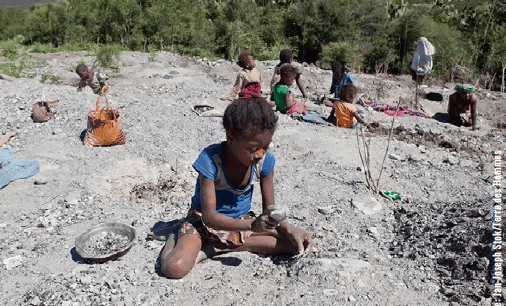
It is not —and can never be— sustainable.
PREMISE ONE: Civilization is not and can never be sustainable. This is especially true for industrial civilization. PREMISE TWO: Traditional communities do not often voluntarily give up or sell the resources on which their communities are based until their communities have been destroyed. They also do not willingly allow their landbases to be damaged so that other resources —gold, oil, and so on— can be extracted. It follows that those who want the resources will do what they can to destroy traditional communities. PREMISE THREE: Our way of living —industrial civilization— is based on, requires, and would collapse very quickly without persistent and widespread violence. PREMISE FOUR: Civilization is based on a clearly defined and widely accepted yet often unarticulated hierarchy. Violence done by those higher on the hierarchy to those lower is nearly always invisible, that is, unnoticed. When it is noticed, it is fully rationalized. Violence done by those lower on the hierarchy to those higher is unthinkable, and when it does occur is regarded with shock, horror, and the fetishization of the victims. PREMISE FIVE: The property of those higher on the hierarchy is more valuable than the lives of those below. It is acceptable for those above to increase the amount of property they control … Read full excerpt from the book Endgame by Derrick Jensen: Read full text:
Find support for your own unique art and design projects, or support other creative projects at MyAIU Research
Doctrine of discovery

Cause of dehumanization, dispossession, murder, and forced assimilation.
This doctrine established a spiritual, political, and legal justification for colonization and seizure of land not inhabited by Christians. Foundational elements of the Doctrine of Discovery (DoD) can be found in a series of papal bulls, or decrees, beginning in the 1100s … Two papal bulls stand out: (1) Pope Nicholas V’s “Romanus Pontifex” (1455), granting the Portuguese a monopoly of trade with Africa and authorizing the enslavement of local people; (2) Pope Alexander VI’s “Inter Caetera” (1493) to justify Christian European explorers’ claims on land and waterways they ‘discovered’, and promote Christian domination and superiority, and has been applied in Africa, Asia, Australia, New Zealand, and the Americas. If an explorer proclaims to have discovered the land in the name of a Christian European monarch, plants a flag in its soil, reports his “discovery” to the European rulers and returns to occupy it, the land is now his, even if someone else was there first. … This ideology supported the dehumanization of those living on the land and their dispossession, murder, and forced assimilation. It also fueled white supremacy insofar as white European settlers claimed they were instruments of divine design and possessed cultural superiority. … The DoD was the inspiration in the 1800s for the Monroe Doctrine, which declared US hegemony over the Western Hemisphere, and Manifest Destiny, which justified American expansion westward by propagating the belief that the US was destined to control all land from the Atlantic …
Read full text:
Period poverty

Snares

Low-tech, low-profile killers of rare wildlife the world over.
Snares can be deadly. In fact, that’s the point. Hunters and poachers around the world use rope, wire or brake cables to make these simple, low-tech, nooselike traps. And they set them in the forest to catch animals. While hunters mostly target antelope and other smaller game to eat or sell as bushmeat, the snares don’t care. They’re indiscriminate. They often maim or kill non-targeted animals: Elephants, lions, tigers, giraffes. Or a young, critically endangered Grauer’s gorilla like Iragi. … Notably, snares hit the hunting trifecta: They’re cheap, effective, and made from easily available materials, like rope, wire or brake cables. … Conservationists note that snares are one of the cruelest ways of hunting. “Animals can sometimes languish for days or weeks in a snare before dying from their injuries, dehydration or from starvation,” WWF’s Silence of the Snares report explains. And even if an individual manages to escape, “it will often perish later from infection caused by the injury, or starve due to the fact that the injury has limited its ability to walk, forage or hunt.” … The global scale of snaring can be mind-boggling. WWF’s “Silence of the Snares” estimates 12 million snares are present throughout protected areas of Cambodia, Laos and Vietnam, with the number likely far greater across the wider Southeast Asian region. That leads to a vast number of unintended casualties. …
Read full text:
Chile rivers

…Native spirituality and development clash.
In the worldview of the Mapuche, Chile’s largest Indigenous group and more than 10% of its population, a pristine river is home to a spiritual force to revere, not a natural resource to exploit. That has led many Mapuche across Chile’s water-rich south to fight hydroelectric plants and other projects they see as desecrating nature and depriving Indigenous communities of essential energies that keep them from getting sick. “Being part of nature, we cannot destroy part of ourselves,” said Lientur Ayenao, a machi or healer and spiritual guide who draws water from the Truful Truful for his ceremonies. “You have to keep the balance, and this is broken when one intervenes in natural space Next month, Chileans will vote on a new and controversial constitution spotlighting Indigenous rights and land restitution. But they’re also dealing with growing violent attacks against agricultural, logging and energy industries, particularly in the Araucania region, including by some groups claiming Mapuche lands. … For most Mapuche, such violence further destabilizes the desired balance between people, the natural space they belong to and the spirits that inhabit it. A first step against it is to ensure non-Natives understand how nature matters to the Mapuche, Indigenous leader and mediator Andrés Antivil Álvarez said. …
Read full text:
Find Open Courses and a world of learning granted by AIU at courses.aiu.edu Help others study and change their lives. Visit MyAIU Pledge.
Campus
Long-term ABA therapy is abusive

A response to Gorycki, Ruppel, and Zane
In its most recent biennial update, the Centers for Disease Control (CDC) indicated that approximately 31% of children with Autism Spectrum Disorder (ASD) were classified as intellectually disabled. In addition, approximately 25–50% of children with ASD do not develop functional verbal communication (Patten et al., 2013). This subset of nonverbal children with autism who are classified as intellectually disabled were the subject of the review by Sandoval-Norton and Shkedy (2019) in which they discussed the use of Applied Behavior Analysis (ABA) on this population.
As described in Sandoval- Norton and Shkedy (2019, p.1) “[ABA] is a form of behavior modification that relies heavily on external reinforcement, both positive and negative (operant conditioning). ABA is intended to modify or diminish behaviors, as well as increase language, communication, social skills, attention, etc., in children with ASD. The main tenets of ABA follow behaviorist theories that suggest that behavior is caused by external stimuli in the environment, which is why a reward (external) would reinforce a behavior, and punishment (external) would discourage a behavior.” As ABA focuses solely on a behavior itself as opposed internal constructs (e.g., thoughts, emotions, pain) (Behavior Analyst Certification Board, 2021a, 2021b), Sandoval- Norton and Shkedy (2019) illustrated and cited research demonstrating how this can lead to psychological and physical abuse, and violates the ethical obligation to “do no harm.” Gorycki et al. (2020) published a response to Sandoval- Norton and Shkedy et al. (2019) in which they identified five criticisms of the original article and cited research which they alleged negates the premise of the original published article. However, the cited research does not predominantly apply to the aforementioned population and does not address the original criticism of ABA. … the following is a detailed explanation and additional research to show why the original research stands.
ABA is unethical and abusive Gorycki et al. (2020) argued against this point by discussing the Professional and Ethical Compliance Code for ABA therapists. They stated that “the ethical code mandates behaving in a way to maximize benefit and minimize harm. Practicing outside one’s scope is unethical. Practicing incompetently is unethical. Instead, behavior analysts create treatment plans based on the client’s needs, as dictated by the client and his/ her significant others.” (Gorycki et al., 2020, p.3) The issue is not whether or not ABA therapists follow their own ethics code; the issue is the ethical scope of the practice of ABA, given that the practice of ABA inherently ignores all internal constructs. Ivar Lovaas, who is revered as the father of ABA, spent the majority of his life expanding and utilizing behavior modification (Smith & Eikeseth, 2011). All of his applications of behavior modification were consistent with the Professional and Ethical Compliance Code for ABA therapists. In the 1970s, Lovaas utilized behavior modification to treat young boys who displayed feminine characteristics. Lovaas believed these feminine “manifestations are indicative of later adult sexual abnormalities, e.g., transvestism, transsexualism, or some forms of homosexuality” (Rekers & Lovaas, 1974, p 173). Lovaas conducted various studies attempting to change these behaviors, despite lacking a basis or understanding of what he believed were sexual abnormalities (Rekers & Lovaas, 1974; Rekers et al., 1974; Rekers et al., 1977). …
Thus, the issue at hand is threefold: (1) what behavior is inherent and appropriate, (2) what expertise is required to make such a determination, and (3) what expertise is required to recognize when the treatment is actually causing harm. … At its core is an inherent requirement that necessitates a therapist’s understanding of the internal processes and abilities of the patient before designing a treatment plan, as well as the training to recognize when the treatment is detrimental. ABA therapists are not required to take even a single class on autism, brain function, or child development (Behavior Analyst Certification Board, 2021a, 2021b). … it is negligent, dangerous, and malpractice for any professional or paraprofessional to claim expertise and implement interventions for a group they have not vigorously studied. …
Gorycki et al. (2020) stated in their response that “autism is a neurological disorder” (p.1). This statement is factual, and there is no disagreement here. However, we are compelled to point out that while the acknowledgement is proper, in theory and practice, ABA does not treat autism as a neurological disorder. ABA is far more concerned with outward manifestations of behavior and the treatment of those manifestations, which is a very far throw from anything that could be considered neuroscientific. … in courses required to become a BCBA, nothing exists that could be considered even tangential to neuroscience (Behavior Analyst Certification Board, 2012). …
Gorycki et al. (2020) also defended ABA’s approach to … “self-stimulatory behaviors.” It is unclear if they are referring to true self-regulatory behaviors or maladaptive and/ or self-injurious behaviors. This is an important distinction, as research indicates that certain self-regulatory behaviors serve to regulate and calm, and as such it is vitally important to distinguish between the two types of behaviors (Baron et al., 2006; Brenner et al., 1947; Tomchek & Dunn, 2007; Tomchek et al., 2014; Shkedy et al., 2019). … forcing a child to stop these soothing behaviors is largely harmful, and unhelpful. We hypothesize that the only reason that ABA attempts to “extinguish” such behaviors is, generally, to make neurotypical people more comfortable. …
Additionally, Gorycki et al. (2020) cited that the ethical code obligates behavior analysts to refer a client who is not making progress to another professional who might be more successful. … The client may be making progress on goals that will actually harm them in the long run. Going back and forth between “professionals” who are not trained to treat the disorder at hand is unlikely to help. … Regardless, of the specific types of behaviors the authors referred to, Gorycki et al. (2020) essentially stated that ABA is successful at reducing whatever behaviors the “consumer” wants. The fact that ABA is consumer-based instead of neuroscience-based or client-centered is very problematic. We are unaware of any other healthcare profession where the patient or parent runs the treatment. …
We are attempting to highlight a non-verbal, highly vulnerable population that deserves to be especially protected by the professionals serving them. Under ABA’s consumer-driven model, the dignity of the child is not taken into account. … Furthermore, Gorycki et al. (2020) did not address self-injurious behaviors in autism and the failure of the Functional Behavior Assessment (the bedrock of ABA) to address these behaviors. Shkedy et al. (2019) demonstrated that self-injurious behaviors in non-verbal children with autism are a cry for help due to their lack of communication skills; ABA therapists overwhelmingly predominantly denote these behaviors as task avoidance. It is precisely because of their lack of training in human psychology that they reach these erroneous conclusions that inevitably cause harm to their clients with autism. … Shkedy et al. (2019) demonstrated that there is a plethora of research showing the oversensitivity the autistic brain has to external stimuli with some of them actually causing physical pain. Basic knowledge of these constraints would lead a therapist to avoid stimuli that are torturous, instead of taking on the false assumption that a child is attempting to escape or avoid a task and then continuing to expose them to the offending stimuli. This only results in a therapist forcing the non-verbal child to endure further torture. We must emphasize that ABA therapists and associations present themselves to the government and the public as autism experts. …
Representing oneself as an expert in a subject one has no knowledge of is usually considered fraud, at least once revealed. At its very core, it is the epitome of unethical action. The growth of the neurodiversity movement in autism is a direct result of the practice of ABA on the autism population. It was the attempt to fix “that which may not be broken” that led to this revolt. … We are not the first authors to emphasize the abusive nature of ABA therapy, and various others continue to identify this abuse and advocate for the termination of this abuse or for alternative treatments (Hungate, 2020; McGill and Robinson, 2020; Milton, 2020; Robinson et al., 2020; Wilkenfeld and McCarthy, 2020). Wilkenfeld and McCarthy (2020) demonstrated that ABA is unethical from a bioethics perspective. …
Finally, Gorycki et al. (2020, p.4) stated that “Sandoval- Norton and Shkedy (2019) claimed that the practice of ABA is unethical due to the exclusive use of behavioral procedures.” They then cited research to show that “students served by intensive ABA have significantly better outcomes (IQ scores, language scores, etc.) than those children who are educated with various non-ABA approaches.” Firstly, the exclusive use of behavioral procedures implies ignoring all the internal processes and as shown above, is what leads to the unethical treatment. Secondly, citing research on a different population group does not validate the argument. Any study that uses IQ as a measure of improvement … has excluded nonverbal children with autism since they notoriously do not have any measurable IQ. In clinical experience with hundreds of nonverbal children with autism, not one had a reported measurable IQ on any previous psychological evaluation. …
ABA promotes prompt dependency …Prompts can be physical, verbal, visual, and even the presence of a paraprofessional can serve as a prompt. Prompting is used as a teaching technique in various fields. The goal is to discontinue prompts as the learner begins to engage in the task independently. ABA’s stated long-term goal of fading prompts and improving independence are acknowledged. However, the methods utilized in ABA are fundamentally unsound for treating the severe autism population. Despite multiple decades as the most preeminent approach for treating those with severe autism, there is no research to support prompt fading actually occurring in this population. The research cited by Gorycki et al. (2020) suggesting prompt dependency is uncommon has many flaws. … This is likely due in part to the fact there is not very much research on this subset of autism (the main point of the original publication). Still, this population is forced to engage in these same interventions, perhaps more often than the non-severe population, despite these studies occurring without them as a primary participant. Many of them have ABA imposed on them over nearly their entire lifetime …
Furthermore, research indicates prompt dependency is a very prevalent problem, even in “higher functioning” individuals (Wilson et al., 2014). … If prompt dependence was only caused by “bad” therapists, one would not expect a plethora of published research about remediating/reducing prompt dependence. … ABA only works for children with particular characteristics of autism Sandoval-Norton and Shkedy (2019) … stated that there is no research indicating that ABA works for nonverbal children with autism. Practitioners of ABA and Gorycki et al. (2020) point to two metastudies as proof that ABA is effective for treating autism (e.g., Peters-Scheff er et al., 2011; Virués-Ortega, 2010). The majority of studies in both of these meta-studies were actually discrete trial training (DTT) and the version of DTT that uses aversives (e.g., electric shocks) to punish behaviors, called the Lovaas/UCLA model. While there are ethical issues involving both of these methodologies, excluding them from the meta-studies begs the question about the efficacy of non-DTT ABA therapy as a treatment for autism. One of the consequences of the neurodiversity movement was the new wave of a “kindergentler” approach to ABA that excluded the use of DTT and the beginning of the use of Natural Environment Teaching. However, these new approaches contain no scientific support from the much quoted meta-analyses, regardless of the ethical implications of long-term ABA as discussed.
two major studies conducted by the US Department of Defense over a nationwide sample in the last two years massively call into question the efficacy of ABA for treating autism. These studies were based on real world experience and not laboratory results. In addition, the sample size for both was over 6000, making them the largest studies these authors are aware of pertaining to autism services. … While the data from the US Department of Defense did include nonverbal children with autism, research presented by Gorycki et al. (2020) and nearly all research on ABA does not pertain to this subset of autism. … As mentioned above, this is because one common characteristic of this population is the inability of professionals to measure their Intellectual Quotient (IQ). … Gorycki et al. (2020, p. 6) also cited that “[p]rofessionals in behavior analysis employ numerous alternative communication methods for those individuals with verbal deficits.”
They continue to state that “[i]n deciding which method is best, behavior analysts determine what type of communication is likely to provide the most influential impact in the shortest amount of time.” While there is agreement that nonverbal children do need alternative means of communication, these comments are just more evidence of practicing outside one’s scope. … ABA includes methodologies that are considered “out of date” and ineffective The Association for Behavior Analysis International asserts that ABA is a natural science comparable to physics and biology (International Association for Behavior Analysis, 2019). According to the Merriam-Webster.com dictionary (2021), a natural science is one that deals with objectively measurable phenomena. While this may be true for some behaviors, there are many behaviors resulting from internal processes that are not objectively measurable.
A simple example is that there is no reliable objective measure of how depressed or angry a person is, and this leads to the conflict between human psychology and ABA. It is this lack of understanding of the human psychology and the lack of scientific rigor that leads to the malpractice of ABA. The cornerstone of ABA is the Functional Behavior Assessment (FBA), which is used to hypothesize the function of a behavior in order to treat it. Behaviorists believe that all behaviors demonstrated by all people serve a function and have a purpose. Behaviors are meant to either obtain something desirable (e.g., attention, money) or to avoid or escape something unpleasant or punishing. As a result, the most common “functions” used in a FBA are positive/negative attention, task avoidance, and escape. However, to scientifically prove a function causes a behavior, both variables need to be measurable. To prove that a child is indeed using a behavior for negative attention, both the behavior and the negative attention must be measurable. To attempt to do otherwise is conjecture and violates the requirements of a natural science. …
Gorycki et al. (2020) objected to the criticism that external reinforcement does not work in the long-term and creates psychological ill-being. They cited Cameron and Pierce (1994) to claim that external rewards do not impinge on intrinsic motivation. However, Kohn (1996) illustrated that there were failures in methodology and inclusion of evidence that led to these erroneous results. Cameron et al. (2001) made the same errors (Deci, et al., 2001). … The consensus is that crowding out reliably occurs under the following conditions: (1) rewards are offered in the context of pre-existing intrinsic motivation (for interesting tasks or pro-social settings), (2) rewards are known in advance and expected, and (3) rewards are tangible. … In order to ameliorate any of the symptoms associated with autism (communication, social skills and repetitive behaviors), it would require the child to perform tasks that require creativity, problem solving, and concentration. Per research, this is suppressed by external incentives, so there is no reason to believe that this amelioration occurs, and again, no legitimate proof is offered to show dampening of symptoms associated with ABA in those with severe autism.
ABA has no data showing its effectiveness over the long-term … Gorycki et al. (2020) chose research that does not pertain to the population discussed by Sandoval-Norton and Shkedy (2019), additionally, even the research chosen does not discuss long-term use of ABA. They seem to have confused following up in the long-term with long-term use of ABA. They do not present any longitudinal studies that shows what occurs when someone receives ABA day in and day out for 5, 10, or 20 years. … Research on the effects of prolonged, long-term use of ABA is sorely lacking. …
Proponents of ABA continue to argue that their archaic approach to human behavior is suitable for the most vulnerable autistic population, though it is no longer used in the wider human population. Despite decades of usage as the primary method for this population worldwide, ABA has never been shown to be even slightly efficacious for this population. … not a single argument, response, or rebuttal has included any neuroscientific research. … That a group of practitioners can state that “autism is a neurological disorder” at the very beginning of a paper and go on to cite zero neurological research and zero neurological basis for their claims about a supposedly efficacious treatment for autism could be considered by some as the very definition of “cognitive dissonance.” Research in ABA continues to neglect the structure of the autistic brain, the overstimulation of the autistic brain, the trajectory of child development …
Read full paper by Aileen H. Sandoval-Norton, Gary Shkedy & Dalia Shkedy:
Help others study and change their lives. Visit MyAIU Pledge. Learn how to have a better financial control. Visit MyAIU Money.
Reusable metal coffee pod.

Cut down on your plastic use by switching to a reusable stainless steel pod that you fill with your own grounds. No extra adapter, parts, or tools required. Compatible with select single K cup coffee makers. www.amazon.com
Prism flip kite.

Just flip the sail of this ripstop polyester kite to start the rotor and let the wind do the rest. The kite gets a lift from the Magnus Effect, the same principle that makes baseballs curve and golf balls loft. store.moma.org
Liftware Steady™.

An electronic stabilizing handle and a selection of attachments that include a soup spoon, everyday spoon, fork, and spork. Liftware Steady is designed to help people with hand tremor, which may be related to Parkinson’s disease or essential tremor, eat more easily. www.liftware.com
Rodger Kamenetz. (1950–)
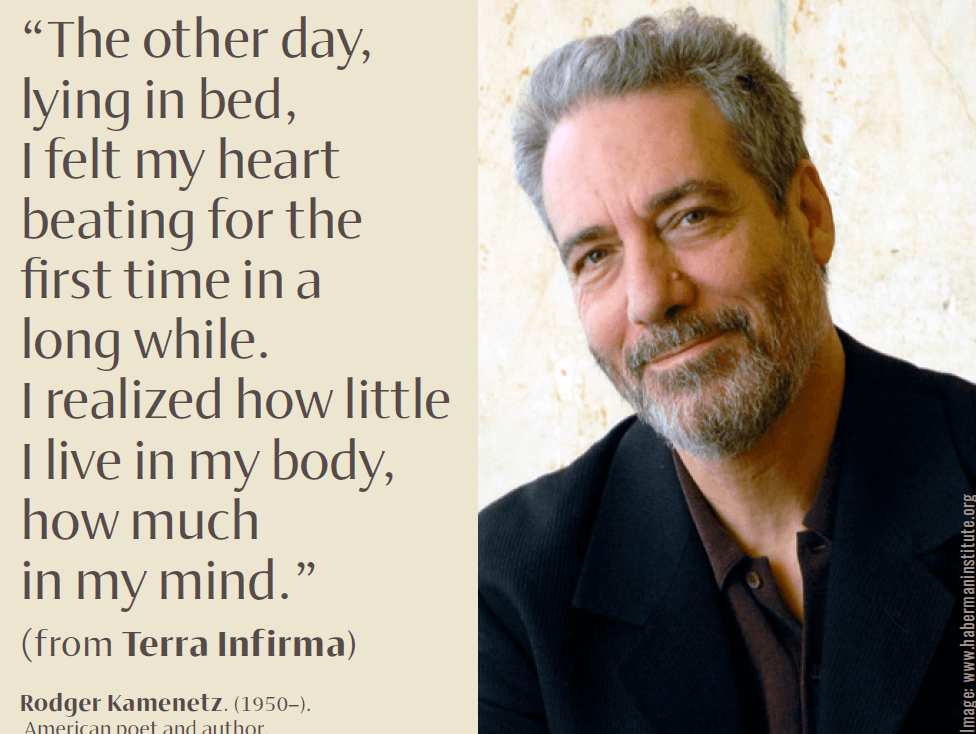
8 ways to prevent them
Collisions with windows cause billions of bird deaths each year; let’s make buildings more bird-friendly. 1. Fritted and patterned glass. Printed with a ceramic frit or dot pattern, this type of glass reduces glare. 2. Translucent and opaque glass. Either etched, stained or frosted, they reduce or eliminate collisions by avoiding the optical illusion of continued space. 4. Window films. Applicable to inside and outside surfaces. 5. Netting, screens and shutters. Solar shading or decorative facades that wrap entire structures. 6. UV-patterned glass. Avian species can see into the UV spectrum of light. 7. Uneven surfaces. Create contrast and uneven reflections. 8. Decals and stickers. Can range from stickers that resemble silhouettes of animals to simple strips of tape. Read full text:
Long distance friendship lamp.

Light up loved ones’ lives —across town or across the world— with these in-sync lamps. Touch yours, and theirs emits the same glow to send a little “thinking of you.” www.uncommongoods.com
Say what?
what? “My mother used to say: The older you get, the better you get, unless you’re a banana.” —Rose (Betty White), The Golden Girls.
Source: parade.com
BACHELOR’S DEGREE in Accounting
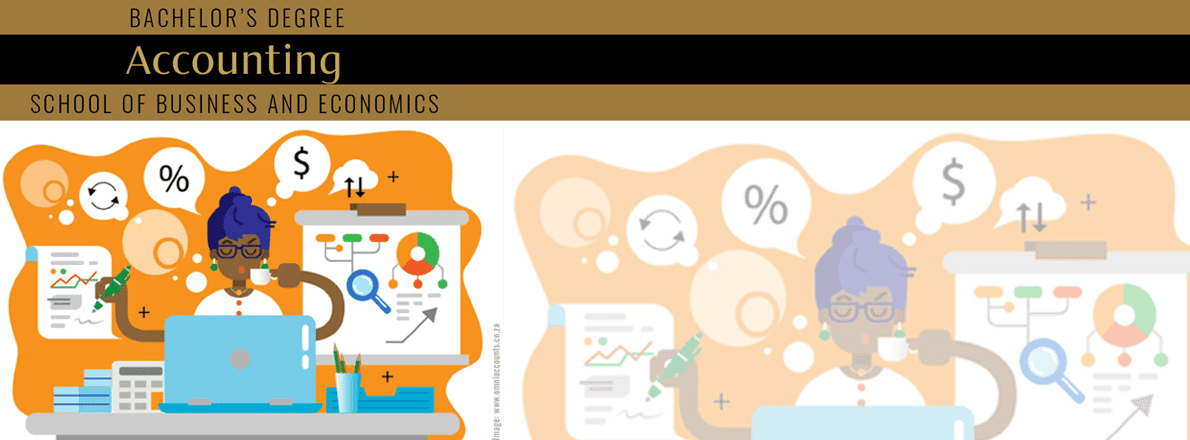
SCHOOL OF BUSINESS AND ECONOMICS
The Bachelor of Accounting program is offered online via distance learning. After evaluating both academic record and life experience, AIU staff working in conjunction with Faculty and Academic Advisors will assist students in setting up a custom-made program, designed on an individual basis. This flexibility to meet student needs is seldom found in other distance learning programs. Our online program does not require all students to take the same subjects/courses, use the same books, or learning materials. Instead, the online Bachelor of Accounting curriculum is designed individually by the student and academic advisor. It specifically addresses strengths and weaknesses with respect to market opportunities in the student’s major and intended field of work. Understanding that industry and geographic factors should influence the content of the curriculum instead of a standardized one-fits-all design is the hallmark of AIU’s unique approach to adult education. This philosophy addresses the dynamic and constantly changing environment of working professionals by helping adult students in reaching their professional and personal goals within the scope of the degree program. Accountants and auditors help to ensure that firms are run efficiently, its public records kept accurately, and its taxes paid properly and on time. They analyze and communicate financial information for various entities such as companies, individual clients, and government. Beyond carrying out the fundamental tasks of the occupation —preparing, analyzing, and verifying financial documents— many accountants also offer budget analysis, financial and investment planning, information technology consulting, and limited legal services.
Below is an example of the topics or areas you may develop and work on during your studies. By no means is it a complete or required list as AIU programs do not follow a standardized curriculum. It is meant solely as a reference point and example. Want to learn more about the curriculum design at AIU? Go ahead and visit our website, especially the Course and Curriculum section: https://wp24.aiu.edu/CourseCurriculum.html
Communication & Investigation (Comprehensive Resume)
Organization Theory (Portfolio)
Experiential Learning (Autobiography)
Seminar Administrative Development (Book Summary)
Seminar Cultural Development (Practical Experience)
Seminar International Development (Publications)
Financial Accounting
Management Accounting
Accounting theory
Accounting Information Systems
Income Tax Accounting
Cost Accounting
Governmental and Institutional
Accounting
Public Accounting
Taxation of Corporations
and Partnerships
International accounting
Auditing
Business ethics
Business Law
Business & Professional
Communication
Economics
Financial Management
International Business
aiu.edu/apply-online.html
Pioneer Plaza/900 Fort Street Mall 410
Honolulu, HI 96813
800-993-0066 (Toll Free in US)
808-924-9567 (Internationally)
Each graduate is encouraged to publish their research papers either online in the public domain or through professional journals and periodicals worldwide.
About Us

Accreditation
Atlantic International University offers distance learning degree programs for adult learners at bachelors, masters, and doctoral level. With self paced program taken online, AIU lifts the obstacles that keep professional adults from completing their educational goals. Programs are available throughout a wide range of majors and areas of study. All of this with a philosophically holistic approach towards education fitting within the balance of your life and acknowledging the key role each individual can play in their community, country, and the world.
Atlantic International University is accredited by the Accreditation Service for International Schools, Colleges and Universities (ASIC). ASIC Accreditation is an internationally renowned quality standard for colleges and universities. Visit ASIC’s Directory of Accredited Colleges and Universities. ASIC is a member of CHEA International Quality Group (CIQG) in the USA, an approved accreditation body by the Ministerial Department of the Home Office in the UK, and is listed in the International Directory of the Council for Higher Education Accreditation (CHEA). The University is based in the United States and was established by corporate charter in 1998.
Our founding principles are based on the United Nations Universal Declaration of Human Rights; per article 26, AIU believes that Higher Education is a Human Right. The University has implemented a paradigm shifting educational model for its academic programs that have allowed it to move closer to this goal through the self-empowerment of its students, decentralization of the learning process, personalized open curriculum design, a sustainable learning model, developing 11 core elements of the Human Condition within MYAIU, and utilizing the quasi-infinite knowledge through the use of information technology combined with our own capacity to find solutions to all types of global issues, dynamic problems, and those of individuals and multidisciplinary teams. Due to these differentiations and the university’s mission, only a reputable accrediting agency with the vision and plasticity to integrate and adapt its processes around AIU’s proven and successful innovative programs could be selected. Unfortunately, the vast majority of accrediting agencies adhere to and follow obsolete processes and requirements that have outlived their usefulness and are in direct conflict with the university’s mission of offering a unique, dynamic, affordable, quality higher education to the nontraditional student (one who must work, study what he really needs for professional advancement, attend family issues, etc.). We believe that adopting outdated requirements and processes would impose increased financial burdens on students while severely limiting their opportunities to earn their degree and advance in all aspects. Thus, in selecting the ASIC as its accrediting agency, AIU ensured that its unique programs would not be transformed into a copy or clone of those offered by the 10,000+ colleges and universities around the world. Since ASIC is an international accrediting agency based outside the United States, we are required by statute HRS446E to place the following disclaimer: ATLANTIC INTERNATIONAL UNIVERSITY IS NOT ACCREDITED BY AN ACCREDITING AGENCY RECOGNIZED BY THE UNITED STATES SECRETARY OF EDUCATION. Note: In the United States and abroad, many licensing authorities require accredited degrees as the basis for eligibility for licensing.

In some cases, accredited colleges may not accept for transfer courses and degrees completed at unaccredited colleges, and some employers may require an accredited degree as a basis for eligibility for employment. Potential students should consider how the above may affect their interests, AIU respects the unique rules and regulations of each country and does not seek to influence the respective authorities. In the event that a prospective student wishes to carry out any government review or process in regards to his university degree, we recommend that the requirements of such are explored in detail with the relevant authorities by the prospective student as the university does not intervene in such processes. AIU students can be found in over 180 countries, they actively participate and volunteer in their communities as part of their academic program and have allocated thousands of service hours to diverse causes and initiatives. AIU programs follow the standards commonly used by colleges and universities in the United States with regards to the following: academic program structure, degree issued, transcript, and other graduation documents. AIU graduation documents can include an apostille and authentication from the US Department of State to facilitate their use internationally.
The AIU Difference
It is acknowledged that the act of learning is endogenous, (from within), rather than exogenous.
This fact is the underlying rationale for “Distance Learning”, in all of the programs offered by AIU. The combination of the underlying principles of student “self instruction”, (with guidance), collaborative development of curriculum unique to each student, and flexibility of time and place of study, provides the ideal learning environment to satisfy individual needs.
AIU is an institution of experiential learning and nontraditional education at a distance. There are no classrooms and attendance is not required.
The AIU Difference
MISSION:
To be a higher learning institution concerned about generating cultural development alternatives likely to be sustained in order to lead to a more efficient administration of the world village and its environment; exerting human and community rights through diversity with the ultimate goal of the satisfaction and evolution of the world.
VISION :
The empowerment of the individual towards the convergence of the world through a sustainable educational design based on andragogy and omniology.
Organizational Structure
Dr. Franklin Valcin
President/Academic Dean
Dr. Ricardo Gonzalez
Chief Operation Officer
and MKT Director
Dr. Miriam Garibaldi
Viceprovost for Research
Dr. Ofelia Miller
Director of AIU
Juan Pablo Moreno
Director of Operations
Paula Viera
Director of
Intelligence Systems
Felipe Gomez
Design Director / IT Supervisor
Daritza Ysla
IT Coordinator
Nadeem Awan
Chief Programming Officer
Dr. Jack Rosenzweig
Dean of Academic Affairs
Dr. Edward Lambert
Academic Director
Dr. Ariadna Romero
Advisor Coordinator
Nadia Gabaldon
Academic Coordinator
Jhanzaib Awan
Senior Programmer
Leonardo Salas
Human Resource Manager
Benjamin Joseph
IT and Technology Support
Rosie Perez
Finance Coordinator
Chris Soto
Admissions Counselor
Dr. José Mercado
Chief Executive Officer
Chairman of the Board of Trustees
Linda Collazo
Logistics Coordinator
Irina Ivashuk
Alumni Association
Coordinator
Clara Margalef
Director of Special Projects
of AIU
David Jung
Corporate/Legal Counsel
Bruce Kim
Advisor/Consultant
Thomas Kim
Corporate/
Accounting Counsel
Camila Correa
Quality Assurance Coordinator
Maricela Esparza
Administrative Coordinator
Chris Benjamin
IT and Hosting Support
Mayra Bolivar
Accounting Coordinator
Roberto Aldrett
Communications Coordinator
Giovanni Castillo
IT Support
Jaime Rotlewicz
Dean of Admissions
Dr. Mario Rios
Academic Advisor
Michael Phillips
Registrar’s Office
Rene Cordon
Admissions Support
Jenis Garcia
Admissions Counselor
Ricardo González, PhD
Provost
Dr. Silvia Restorff
Academic Advisor
Dr. Prakash Menon
Academic Advisor
Carlos Aponte
Telecommunications
Coordinator
Dr. Nilani Ljunggren De Silva
Academic Advisor
Dr. Scott Wilson
Academic Advisor
Dr. Mohammad Shaidul Islam
Academic Advisor
Dr. Edgar Colon
Academic Advisor
Deborah Rodriguez
Academic Tutor Coordinator
Cyndy Dominguez
Academic Tutor Coordinator
Kinmberly Diaz
Admissions Support Tutor
Amalia Aldrett
Admissions Coordinator
Sandra Garcia
Admissions Coordinator
Jose Neuhaus
Admissions Support
Junko Shimizu
Admissions Coordinator
Veronica Amuz
Admissions Coordinator
Alba Ochoa
Admissions Coordinator
Contact Us
Atlantic International University
900 Fort Street Mall 905 Honolulu, HI 96813
Quick Links
Home | Spanish | Online Courses | Available Courses | Vrtual Campus | Career Center | Available Positions | Ask Career Coach | The Job Interview | Resume Writing | Accreditation | Areas of Study | Bachelor Degree Programs | Masters Degree Programs | Doctoral Degree Programs | Course & Curriculum | Human Rights | Online Library | Representations | Student Publication | Sponsors | General Information | Mission & Vision | School of Business and Economics | School of Science and Engineering | School of Social an Human Studies | Media Center | Admission Requirements | Apply Online | Tuition | Faculty & Staff | Distance Learning Overview | Student Testimonials | Frequently Asked Questions | Register for Program | Privacy Policy | FAQ






